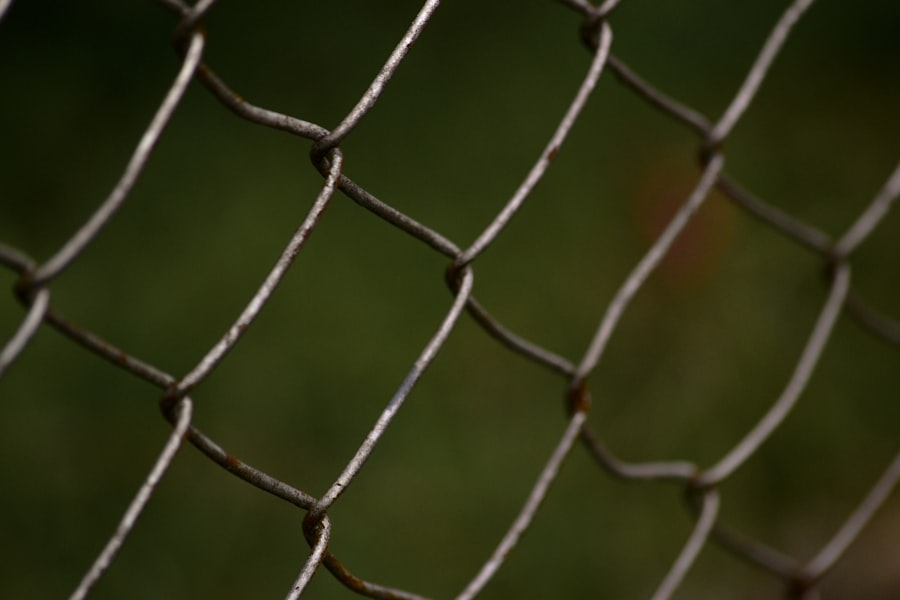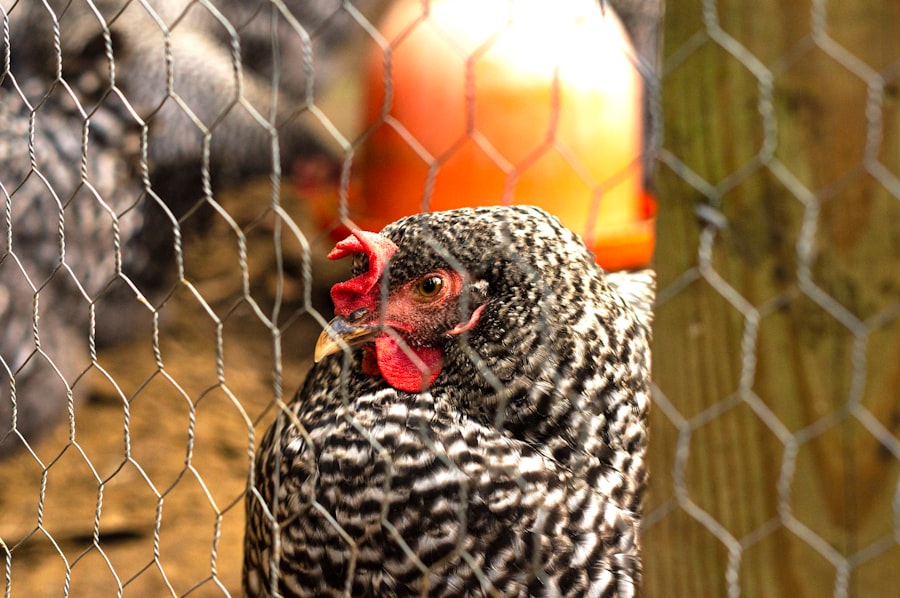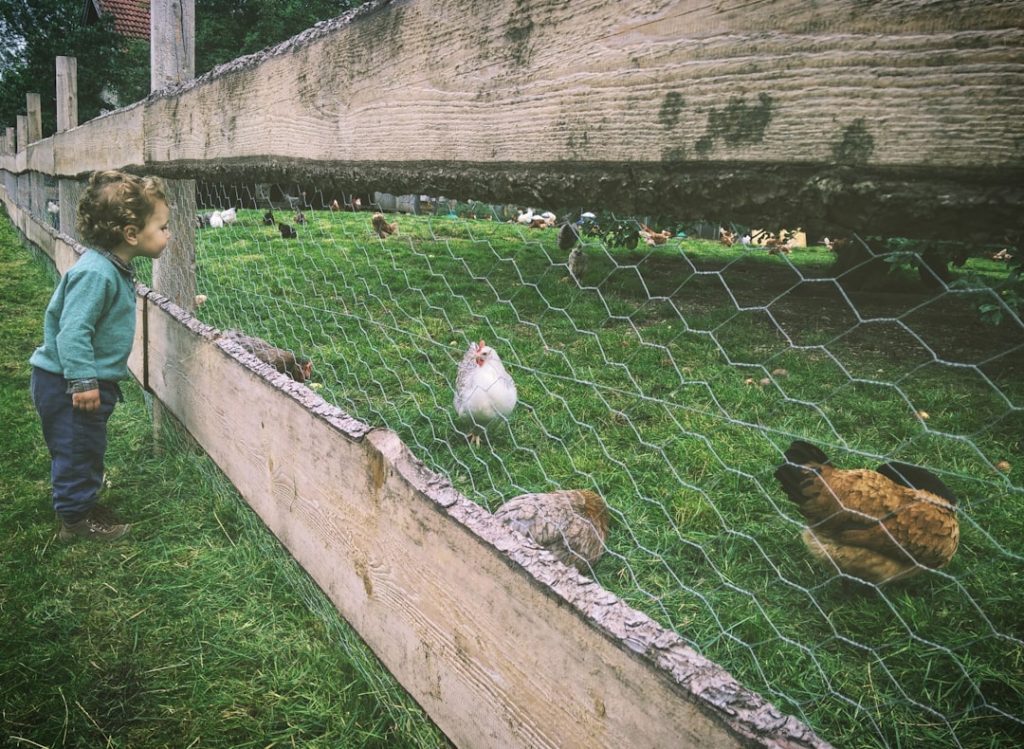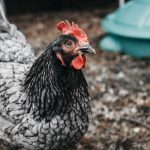Chickens are social creatures with innate instincts to roam, forage, and remain vigilant against predators. These behaviors are essential to consider when creating a safe and secure environment for them. Chickens establish a hierarchical pecking order within their flock, which can lead to aggressive behavior if not properly managed.
Providing adequate space is crucial to allow chickens to establish their social structure without overcrowding, which can cause stress and conflict. Chickens have a natural inclination to roost at night, making it important to provide a secure and comfortable roosting area. Understanding these natural behaviors allows caretakers to create an environment that meets the chickens’ needs and minimizes the risk of escape or injury.
Chickens are known for their curiosity and intelligence, often exploring their surroundings and seeking new experiences. This behavior can sometimes lead to escape attempts as they search for novel food sources or stimulation. By recognizing this trait, caretakers can implement enrichment activities within the enclosure to satisfy the chickens’ need for mental stimulation and reduce the likelihood of escape attempts.
Anticipating potential escape routes based on chickens’ natural instincts allows for proactive measures to secure their environment. By comprehending chicken behavior, caretakers can create a safe and secure living space that addresses both physical and psychological needs, ultimately reducing escape risks and promoting overall well-being.
Table of Contents
- 1 Clipping the wings
- 2 Installing a barrier
- 3 Providing entertainment and enrichment
- 4 Training and positive reinforcement
- 5 Creating a secure coop
- 6 Seeking professional advice
- 7 FAQs
- 7.1 What are some methods to keep chickens from flying over the fence?
- 7.2 How can I clip my chickens’ wings to prevent them from flying over the fence?
- 7.3 What type of netting or wire should I use to cover the top of the chicken enclosure?
- 7.4 What are some ways to provide enough space and entertainment within the chicken enclosure to discourage them from flying out?
Key Takeaways
- Chickens are social animals and have a natural pecking order within their flock.
- Clipping the wings of chickens can prevent them from flying over fences and escaping.
- Installing a barrier such as a fence or netting can help keep chickens contained in a specific area.
- Providing entertainment and enrichment such as perches, dust baths, and toys can keep chickens mentally stimulated.
- Training and positive reinforcement can help chickens learn desired behaviors and respond to commands.
- Creating a secure coop with strong locks and predator-proofing can protect chickens from harm.
- Seeking professional advice from a veterinarian or experienced chicken keeper can provide valuable insights and guidance for raising chickens.
Clipping the wings
How Wing Clipping Works
One method of preventing chickens from escaping their enclosure is by clipping their wings. This involves trimming the primary feathers on one wing to prevent the chicken from achieving lift and flying over fences or barriers. It’s important to note that wing clipping should be done with care and precision to avoid causing discomfort or injury to the chicken.
The Temporary Solution
The process involves trimming the feathers on one wing, which disrupts the bird’s balance and prevents it from achieving flight. This method is temporary, as the feathers will eventually grow back, so it may need to be repeated periodically to maintain its effectiveness.
Considerations and Limitations
Another consideration when it comes to wing clipping is the potential impact on the chicken’s ability to escape predators. While wing clipping can prevent chickens from flying over fences, it also limits their ability to flee from potential threats. This means that wing clipping should be done in conjunction with other security measures, such as installing a secure coop and providing a barrier around the enclosure.
Weighing the Pros and Cons
It’s important to weigh the pros and cons of wing clipping and consider the individual needs and behaviors of your flock before deciding whether it’s the right approach for your situation.
Installing a barrier

Installing a physical barrier around the chicken enclosure is an effective way to prevent escape attempts. This can be achieved through the use of fencing, netting, or other materials that create a secure boundary around the area where the chickens are kept. When choosing a barrier, it’s important to consider the size and strength of the chickens, as well as any potential predators in the area.
The barrier should be tall enough to prevent chickens from flying over it, and strong enough to withstand attempts to dig under or push through it. In addition to a physical barrier, it’s important to consider the security of the coop itself. This includes ensuring that doors and windows are secure, and that there are no gaps or openings that could allow chickens to escape or predators to enter.
Regular maintenance and inspection of the barrier and coop are essential for ensuring its effectiveness in preventing escape attempts. By installing a secure barrier around the chicken enclosure, you can create a safe and contained environment for your flock, reducing the likelihood of escape and ensuring their well-being.
Providing entertainment and enrichment
One way to prevent chickens from attempting to escape is by providing them with plenty of entertainment and enrichment within their enclosure. Chickens are curious and intelligent animals that thrive on mental stimulation and physical activity. By providing them with opportunities to explore, peck, scratch, and engage in natural behaviors, you can reduce the likelihood of escape attempts driven by boredom or frustration.
This can be achieved through the use of toys, perches, dust baths, and other items that encourage natural behaviors and provide mental stimulation. In addition to physical enrichment, it’s important to consider the diet and nutrition of your chickens. Providing a balanced diet that meets their nutritional needs can help prevent boredom-driven escape attempts driven by hunger or cravings for certain nutrients.
By providing a variety of foods, treats, and foraging opportunities, you can keep your chickens engaged and satisfied within their enclosure. By providing entertainment and enrichment within the chicken enclosure, you can reduce the likelihood of escape attempts driven by boredom or frustration, while also promoting the physical and psychological well-being of your flock.
Training and positive reinforcement
Training your chickens using positive reinforcement techniques can be an effective way to prevent escape attempts and encourage desirable behaviors. Chickens are intelligent animals that can learn to respond to cues and commands through consistent training and positive reinforcement. By using treats, praise, and rewards to reinforce desired behaviors such as returning to the coop on command or staying within designated areas, you can reduce the likelihood of escape attempts driven by disobedience or lack of training.
It’s important to approach training with patience and consistency, as well as an understanding of the individual personalities and behaviors of your flock. Not all chickens will respond in the same way to training methods, so it’s important to tailor your approach to meet the needs of each bird. By establishing clear expectations and using positive reinforcement techniques, you can encourage your chickens to stay within their designated areas and reduce the likelihood of escape attempts.
Training your chickens using positive reinforcement techniques can be an effective way to prevent escape attempts while also strengthening the bond between you and your flock.
Creating a secure coop

Designing a Secure Coop
This includes secure doors and windows, as well as a solid roof that provides protection from aerial threats.
Maintenance and Inspection
It’s important to regularly inspect and maintain the coop to ensure that there are no weak spots or vulnerabilities that could allow chickens to escape or predators to enter. In addition to physical security, it’s important to consider the comfort and well-being of your chickens within the coop.
A Happy and Healthy Flock
This includes providing adequate space for roosting, nesting, and perching, as well as ventilation and access to food and water. By creating a secure coop that meets the needs of your flock, you can reduce the likelihood of escape attempts while also promoting their physical and psychological well-being.
Seeking professional advice
If you’re struggling to prevent escape attempts by your chickens despite implementing various measures, it may be beneficial to seek professional advice from a veterinarian or animal behaviorist. These professionals can provide insights into the specific behaviors and needs of your flock, as well as offer tailored recommendations for preventing escape attempts. They can also help identify any underlying issues that may be contributing to escape attempts, such as stress, aggression, or health problems.
In some cases, seeking professional advice may also involve consulting with a poultry expert or experienced chicken keeper who can offer practical tips and guidance based on their own experiences. By seeking professional advice, you can gain valuable insights into preventing escape attempts by your chickens while also ensuring their overall well-being. In conclusion, understanding the behavior of chickens is crucial for preventing escape attempts and ensuring their safety and well-being.
By implementing measures such as wing clipping, installing a barrier, providing entertainment and enrichment, training with positive reinforcement, creating a secure coop, and seeking professional advice when needed, you can create a safe and contained environment for your flock while promoting their physical and psychological well-being.
If you’re looking for ways to keep your chickens from flying over the fence, you may also be interested in learning how long it takes for chicken eggs to hatch naturally. Check out this informative article on how long for chicken eggs to hatch naturally to gain a better understanding of the hatching process and how to care for your chicks once they’ve hatched.
FAQs
What are some methods to keep chickens from flying over the fence?
Some methods to keep chickens from flying over the fence include clipping their wings, using netting or wire over the top of the enclosure, and providing enough space and entertainment within the enclosure to discourage them from wanting to fly out.
How can I clip my chickens’ wings to prevent them from flying over the fence?
To clip a chicken’s wings, you can gently catch the chicken and trim the primary feathers on one wing. This will make it difficult for the chicken to achieve lift and fly over the fence.
What type of netting or wire should I use to cover the top of the chicken enclosure?
You can use poultry netting or hardware cloth to cover the top of the chicken enclosure. Make sure the netting or wire is securely fastened to prevent any gaps that the chickens could escape through.
What are some ways to provide enough space and entertainment within the chicken enclosure to discourage them from flying out?
You can provide perches, dust bathing areas, and enrichment activities such as hanging treats or toys for the chickens to peck at. Additionally, ensuring the enclosure is spacious and has plenty of room for the chickens to roam can help discourage them from wanting to fly over the fence.
Meet Walter, the feathered-friend fanatic of Florida! Nestled in the sunshine state, Walter struts through life with his feathered companions, clucking his way to happiness. With a coop that’s fancier than a five-star hotel, he’s the Don Juan of the chicken world. When he’s not teaching his hens to do the cha-cha, you’ll find him in a heated debate with his prized rooster, Sir Clucks-a-Lot. Walter’s poultry passion is no yolk; he’s the sunny-side-up guy you never knew you needed in your flock of friends!







